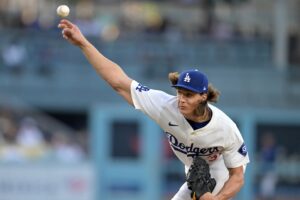The 1930s were an era of extreme hardship in America. The Great Depression took its toll on everything, tanking the economy. However, in baseball, Babe Ruth continued his superstardom. He signed a $160,000 contract with the Yankees in 1930. This made him the highest-paid player in the game. In fact, his salary was higher than the president himself. Ironically enough, five years later, he’d find himself petering out with the meek Boston Braves.
Speaking of the Braves, the decade presented an era of desperate hope for the team. For many seasons, things looked up. They finally had some balance in the managerial department. But, in the long run, not even Casey Stengel could garner consistency. The time was marked by depression, and that rang true for Braves fans. The team had embarked on its most up and down period yet.
1930s Boston Braves/Bees
An Attempt at a Rebound
The franchise was looking to rebound from an abysmal 1929. Judge Fuchs was ousted as manager, and Bill McKechnie was brought in. His first season brought about middling results. A 70-82 record and a sixth-place finish, to be exact. The offense was bottom of the barrel in many aspects. But there were some bright spots. Hall of Famers George Sisler and Rabbit Maranville both posted respectable numbers. Outfielder Lance Richbourg hit over .300. But the true star was fellow outfielder Wally Berger. He posted a .310 average, 38 homers, 119 RBI, and a 137 OPS+.
The pitching also had its share of good and bad. The team ERA of 4.91 was fifth and they had a respectable 100 ERA+. However, most of the individual performances were lackluster. Left-hander Tom Zachary posted an 11-5 record. But his ERA was 4.58, and he struck out 57 batters in 151.1 innings of work. Team ace Socks Seibold had a 15-16 mark but posted the lowest ERA at 4.12. So, overall, the pitching was something of a toss-up.
In 1931, the team dipped. They finished 64-90, seventh in the league. The offense experienced a major setback. The team average fell from .281 to .256, though their OPS+ rose from 75 to 77. Berger carried the team again, finishing with a .323 average, 19 homers, 84 RBI, and an OPS+ of 141. He was joined in the outfield by Wes Schulmerich, who posted a .309 average and a 113 OPS+. Sadly, the rest of the offense couldn’t keep up. However, the pitching staff experienced substantial improvement. The team ERA fell to 3.90, and it was thanks to ace Ed Brandt. The four-year player had never finished above .500. He wound up with an 18-11 record, a 2.92 ERA, and a 131 ERA+. However, the team ERA+ did slip to 98.
Hopeful Times
The next two seasons served as sources of inspiration. The hopeful Braves fans might finally have had something to cheer about. In 1932, McKechnie led the team to a 77-77 record. While the offense failed to truly rebound, the pitching shone. Brandt and righty Bob Brown led the staff to a 3.53 ERA, second-best in the league. The ERA+ was 107. In 1933, the team was even better. An 83-71 mark was their best in 17 seasons. The offense finally bounced back, with Berger launching 27 homers to lead the team. The pitching was just as good, with right-hander Ben Cantwell winning 20 games. All in all, the team put together a 2.96 ERA and a 103 ERA+.
In 1934, the team went through a minor drawback, finishing 78-73. Cantwell experienced a radical fall from grace, dropping to five wins. But Brandt continued leading the staff with a 16-14 record. He was joined by Fred Frankhouse, who posted 17 wins and a 3.20 ERA. So, in short, it seemed like a small bump in the road. It was certainly nothing to be concerned about. After all, teams experienced small setbacks all the time. Little did Braves fans know, but the worst season in franchise history was right around the corner.
The Worst Season in Franchise History
1935. The season in which the Braves went 35-115. Nothing went right unless your name was Wally Berger. The offense was last in nearly every category. However, Berger did pop 34 homers and 130 RBI. Other than that, this team was a horror show. The pitching was mostly to blame, with the group’s ERA skyrocketing to nearly five. A core that had once looked promising now looked like a detriment. Cantwell and Brandt both fell severely, posting four and five wins respectively. Frankhouse took over as ace and led the team with 11 wins and a 4.76 ERA. The team ERA+ plummeted to 77. Even an aging Ruth could not save the team, though he did hit his final six homers.
Improvements and Downfalls
Surprisingly enough, no managerial change came with this pitiful campaign. But one thing that did change was the name. The Braves became the Bees and experienced two better seasons. In 1936, the team went 71-83. Berger had another fantastic season, though his numbers were lower than usual. Other than that, the offense was mediocre. However, the pitching did improve tremendously. A new star emerged in Danny MacFayden, who went 17-13 with a 2.87 ERA and a 133 ERA+.
1937 saw the team improve back over .500. In their first season without Berger, the Bees offense was abysmal (.247/.314/.339, 63 homers, and 534 RBI). But the pitching core was one of the best in baseball. A league-leading 3.22 ERA was backed up by a 111 ERA+. Lou Fette and Jim Turner both won 20 games. MacFayden added 14. All three had ERAs under three. In short, it was one of the best rotations of the era.
This same rotation was brought back for 1938, but McKechnie was not. Instead, Hall of Famer Casey Stengel was brought in to manage. The Bees hung around .500, finishing 77-75. The offense was, once again, terrible. But the pitching held up, even though Fette fell to 11-13 and Turner to 14-18. MacFayden solidified the staff, going 14-9 with a very respectable 2.95 ERA and a 116 ERA+.
In 1939, the Bees fell to 63-88, with the pitching taking the brunt of the hit. MacFayden was no longer as effective, and Turner fell to four wins. But Fette had something of a rebound campaign (10-10, 2.96 ERA, 125 ERA+). However, this wasn’t enough to overcome another stifling offensive season. The team finished 32.5 games back of the pennant-winning Cincinnati Reds.
Main Photo:






